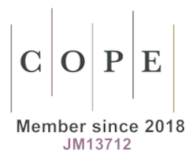U.S. and China: Hard and Soft Power Potential
DOI:
https://doi.org/10.18778/1641-4233.22.03Keywords:
Hard and soft power, America and China’s power resourcesAbstract
The United States, as a leading world power, has to face China – an emerging powerful rival. The potential of both states’ power is measured by universal indicators. On a military level, these indicators are: military expenditure, soldiers/reserve/soldiers abroad, offensive weapons, nuclear warheads. On an economic level: GDP value, reserve currency/public debt to GNP, direct investment home and abroad. With regard soft power, six categories have been taken into consideration: diplomacy, socio-political, socio-economic, education, high and popular culture. All of the three researched levels were correlated with both states’ political system specificity and the character of the international arena’s relations. It allowed for the assessment of the current levels of both states’ power as well as their future prospects.
Downloads
References
Bógdał-Brzezińska, A., Mocarstwowość w teorii stosunków międzynarodowych, [in:] Państwo w teorii i praktyce stosunków międzynarodowych, ed. M. Sułek, J. Symonides, Warszawa 2009, pp. 80–94.
Google Scholar
Ferguson, N., Potęga pieniądza, Warszawa 2009.
Google Scholar
Fontana, B., Hegemony and Power: on the Relation Between Gramsci and Machiavelli, London 1993.
Google Scholar
Fukuyama, F., Budowanie państwa. Władza i ład międzynarodowy w XXI wieku, Poznań 2005.
Google Scholar
Kleinowski, M., Czynniki budujące siłę i potęgę państwa, “Świat Idei i Polityki”, Toruń 2010, vol. 10, pp. 52, 21–48.
Google Scholar
Kuźniar, R., Polityka i siła. Studia strategiczne. Zarys problematyki, Warszawa 2005.
Google Scholar
Kuźniar, R., Wprowadzenie. Soft power i wielkość Ameryki [in:] J.S. Nye, Soft power. Jak osiągnąć sukces w światowej polityce, Warszawa 2007, pp. 6–31.
Google Scholar
Liber, R.J., Power and will power In the American Future. Why the United States Is Not Destined to Decline, Cambridge 2012.
Google Scholar
DOI: https://doi.org/10.1017/CBO9780511862588
Łoś, R., Soft power w niemieckiej polityce zagranicznej, “Atheneum. Polskie Studia Politologiczne” 2012, no. 35, pp. 166–185.
Google Scholar
Łoś, R., Soft power we współczesnych stosunkach międzynarodowych, Łódź 2016.
Google Scholar
McClory, J., The New Persuaders III, A 2012 Global Ranking of Soft power, Institute for Government, London 2012. Web. http://www.instituteforgovernment.org.uk/sites/default/files/publications/thenewpersaudersIII_0.pdf (accessed: 13.09.2015).
Google Scholar
McGann, J.G., 2012 Global Go To Think Tanks Index Report, Philadelphia: University of Pennsylvania, 2012.
Google Scholar
Nye, J.S., Public Diplomacy and Soft Power, “ANNALS of the American Academy of Political and Social Science”, no. 616, March 2008, pp. 98–110.
Google Scholar
DOI: https://doi.org/10.1177/0002716207311699
Nye, J.S. jr., Bound to Lead: the Changing Nature of American Power, New York 1991.
Google Scholar
Nye, J.S. jr., The Future of Power, New York 2011.
Google Scholar
Nye, J.S. jr., The Paradox of American Power, New York 2002.
Google Scholar
DOI: https://doi.org/10.1093/0195161106.001.0001
Nye, J.S. jr., Soft Power: The Means to Success In World Politics, New York 2005.
Google Scholar
Ociepka, B., Nowa dyplomacja publiczna – perspektywa teorii stosunków międzynarodowych i komunikowania politycznego, “Przegląd Strategiczny” 2012, no. 1, pp. 134–154.
Google Scholar
DOI: https://doi.org/10.14746/ps.2012.1.8
Ogbonnaya, Igwe D., The Perception of Power In The Context of National Security And Foreign Policy Thrust, “Journal of Military and Strategic Studies”, vol. 14, Issue 2, 2012, pp. 4–31.
Google Scholar
Pietraś, M., Pozimnowojenny ład międzynarodowy, [in:] Międzynarodowe stosunki polityczne, ed. M. Pietraś, Lublin 2006, pp. 307–332.
Google Scholar
Przeworski, A., Alvarez, M., What Makes Democracies Endure? “Journal of Democracy”, 1996/7, no. 1, pp. 39–55.
Google Scholar
DOI: https://doi.org/10.1353/jod.1996.0016
Przeworski, A., Limongi, F., Political Regimes and Economic Growth, “Journal of Economic Perspectives”, vol. 7, 1993, no. 3, pp. 61–64.
Google Scholar
DOI: https://doi.org/10.1257/jep.7.3.51
Rapid-growth markets soft power index. Spring 2014, 13.05.2015. Web. http://www.ey.com/GL/en/Issues/Driving-growth/Rapid-growth-market.softpowerindex.pdf (accessed: 23.05.2015).
Google Scholar
Smith, R., Przydatność siły militarnej. Sztuka wojenna we współczesnym świecie, Warszawa 2010.
Google Scholar
Sułek, M., Modelowanie i pomiar potęgi państw w stosunkach międzynarodowych, „Stosunki Międzynarodowe” 2003, no. 3–4, pp. 69–99.
Google Scholar
Wójcik, A., Dylemat potęgi: praktyczna teoria stosunków międzynarodowych, Warszawa 2010.
Google Scholar
DOI: https://doi.org/10.31338/uw.9788323511557
http://info.worldbank.org/governance/wgi/index.aspx (accessed: 13.08.2014).
Google Scholar
http://softpower30.portland-communications.com/pdfs/the_soft_power_30.pdf (accessed: 13.09.2015).
Google Scholar
The Military balance Report 2015: www.iiss.org
Google Scholar
www.globalfirepower.org
Google Scholar
www.realinstituteelcano.org (accessed: 14.09.2015).
Google Scholar
www.sipri.org
Google Scholar
www.unctad.org (accessed: 13.05.2014).
Google Scholar
Downloads
Published
How to Cite
Issue
Section
License
Copyright (c) 2018 International Studies. Interdisciplinary Political and Cultural Journal

This work is licensed under a Creative Commons Attribution-NonCommercial-NoDerivatives 4.0 International License.

















